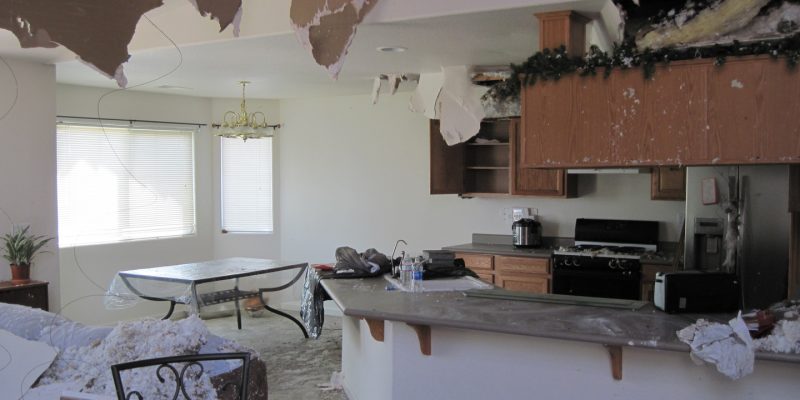Do's as well as Don'ts During Water Damages Emergency Situations.
Do's as well as Don'ts During Water Damages Emergency Situations.
Blog Article
The article down below involving Keeping Your Home Safe This Holiday Season is amazingly insightful. You should see for yourself.

Water gives life, water breach on parts where it's not meant to be can result in damages. It can peel away surface areas and wear down the foundation if the water saturates into your framework. Mold and mildew and mold additionally grow in a moist setting, which can be unsafe for your health. Houses with water damages smell old and also musty.
Water can originate from numerous resources such as typhoons, floodings, ruptured pipes, leakages, and also sewer concerns. In case you experience water damages, it would be good to know some safety and security preventative measures. Right here are a couple of standards on just how to deal with water damages.
Do Prioritize Home Insurance Protection
Water damage from flood as a result of heavy winds is seasonal. However, you can additionally experience an unexpected flooding when a damaged pipeline unexpectedly ruptures into your house. It would be best to have house insurance that covers both acts of God such as all-natural disasters, and emergency situations like damaged plumbing.
Do Not Forget to Turn Off Energies
In the event of a catastrophe, particularly if you live in a flood-prone location, it would certainly be a good idea to switch off the main electric circuit. This cuts off power to your whole residence, stopping electrical shocks when water is available in as it is a conductor. Do not neglect to transform off the major water line valve. Furniture will move around as well as cause damages when floodwaters are high. Having the primary shutoff shut down stops more damage.
Do Stay Proactive and also Heed Weather Notifies
Listen to evacuation warnings if you live near a lake, creek, or river . Doing so reduces possible home damage.
Don't Neglect the Roof
You can stay clear of rainfall damage if there are no openings and also leaks in your roofing. This will prevent water from moving down your wall surfaces and saturating your ceiling.
Do Focus On Small Leaks
A burst pipe doesn't happen overnight. Typically, there are red flags that show you have damaged pipes in your home. You may see bubbling paint, peeling wallpaper, water streaks, water stains, or dripping audios behind the wall surfaces. Ultimately, this pipe will rupture. Preferably, you need to not wait for things to intensify. Have your plumbing fixed before it causes large damages.
Don't Panic in Case of a Burst Pipe
Keeping your clearheadedness is important in a time of crisis. Worrying will just compound the trouble because it will certainly stifle you from acting quickly. When it involves water damage, timing is crucial. The longer you wait, the even more damages you can expect. Thus, if a pipe bursts in your home, quickly turned off your major water shutoff to remove the resource. Then disconnect all electric outlets in the area or turn off the circuit breaker for that part of your home. Call a respectable water damages repair professional for support.
Water gives life, water invasion on components where it's not expected to be can result in damages. Residences with water damage odor stuffy and old.
Water damage from flooding dues to heavy winds is seasonal. You may discover gurgling paint, peeling wallpaper, water touches, water discolorations, or trickling audios behind the wall surfaces. When it comes to water damages, timing is essential.
Some Do's & Don't When Dealing with a Water Damage
DO:
Make sure the water source has been eliminated. Contact a plumber if needed. Turn off circuit breakers supplying electricity to wet areas and unplug any electronics that are on wet carpet or surfaces Remove small furniture items Remove as much excess water as possible by mopping or blotting; Use WHITE towels to blot wet carpeting Wipe water from wooden furniture after removing anything on it Remove and prop up wet upholstery cushions for even drying (check for any bleeding) Pin up curtains or furniture skirts if needed Place aluminum foil, saucers or wood blocks between furniture legs and wet carpet Turn on air conditioning for maximum drying in winter and open windows in the summer Open any drawers and cabinets affected for complete drying but do not force them open Remove any valuable art objects or paintings to a safe, dry place Open any suitcases or luggage that may have been affected to dry, preferably in sunlight Hang any fur or leather goods to dry at room temperature Punch small holes in sagging ceilings to relieve trapped water (don't forget to place pans beneath!); however, if the ceiling is sagging extremely low, stay out of the room and we'll take care of it DO NOT:
Leave wet fabrics in place; dry them as soon as possible Leave books, magazines or any other colored items on wet carpets or floor Use your household vacuum to remove water Use TV's or other electronics/appliances while standing on wet carpets or floors; especially not on wet concrete floors Turn on ceiling fixtures if the ceiling is wet Turn your heat up, unless instructed otherwise

As a fervent reader about Fire And Water Damage Prevention, I was thinking sharing that information was worth the trouble. Do you know about somebody who is interested in the subject? Why not share it. Thanks for your time invested reading it.
Report this page